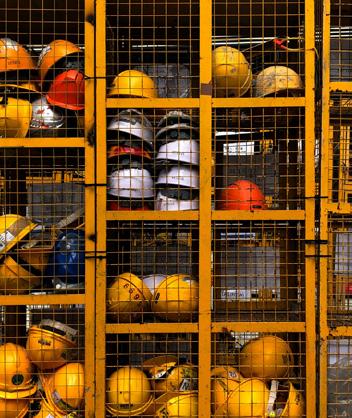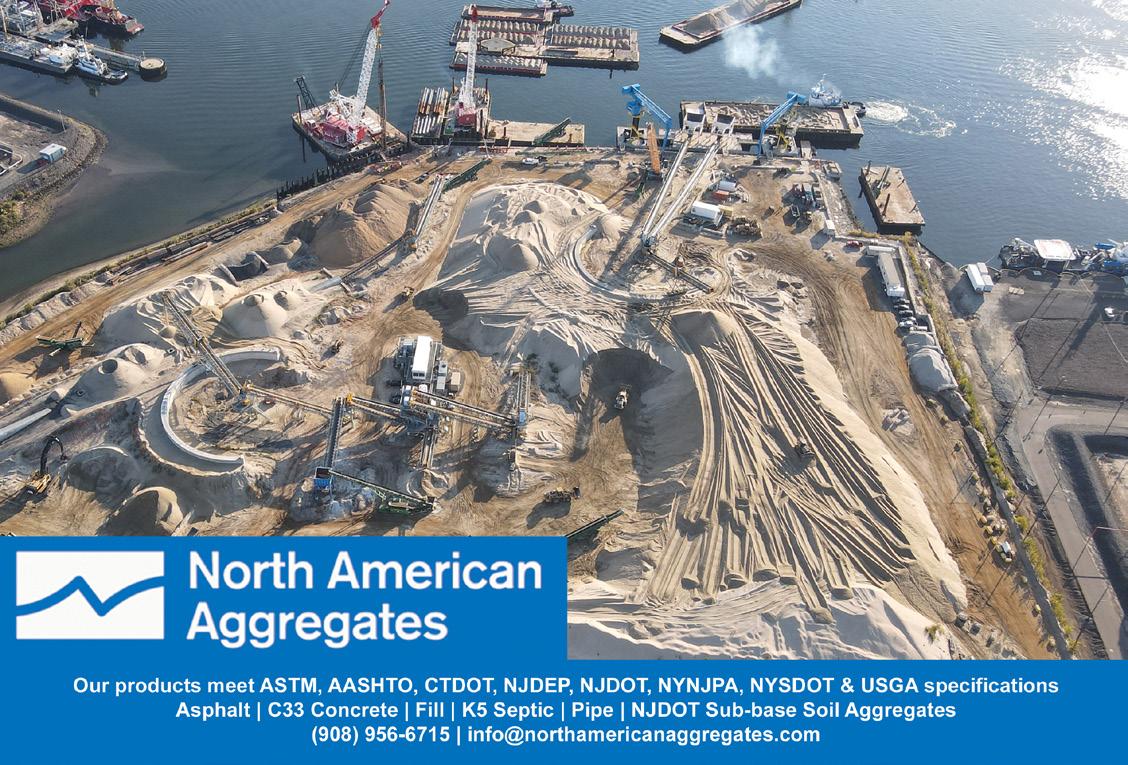
3 minute read
SAFETY PERSPECTIVES
WHO IS REQUIRED TO HAVE A DRIVER QUALIFICATION FILE?
A driver’s qualification (DQ) file is often thought to go handin-hand with the commercial driver’s license (CDL). This misperception has created confusion for many carriers. For interstate drivers, the need for a DQ file is based on the size and type of vehicle being driven. The applicable definition of commercial motor vehicle (per §390.5) includes both CDL and non-CDL drivers alike. Intrastate drivers would need to look at state-specific regulations to determine applicability.
Individuals operating the following vehicles in interstate commerce need to have a completed DQ file:
• Vehicles with a gross vehicle weight (GVW) or gross vehicle weight rating (GVWR), or gross combination weight (GCW), or gross combination weight rating (GCWR) of 10,001 pounds or more
• Vehicles designed to transport more than 15 people, or more than eight people when there is direct compensation involved
• Vehicles transporting hazardous materials that require the vehicle to be placarded
• The criterion in this definition that causes confusion is the vehicle weight. The general weight criterion for which a CDL is needed is 26,001 pounds. The weight criterion for which a file is needed is 10,001 pounds. So, interstate drivers of vehicles between 10,001 and 26,001 pounds (not hauling hazmat) need to have a DQ file but do not need to have a CDL.
Noise Hazard Awarness
Work around heavy equipment and power operated tools used in construction often generates excessive noise. This noise can often result in hearing loss. According to NIOSH, three out of four construction workers are exposed to noise levels above their recommended limit, which can result in moderate to severe hearing loss. Many construction workers will experience hearing loss at a young age. A young construction worker may have a hearing loss of a worker twice as old.
The loss of hearing for construction workers is often overlooked as a significant hazard, but in reality, hearing loss can cause many accidents and affect the workers’ safety and personal life. Feasible engineering or administration controls should be used to protect workers if employees are subjected to noise exceeding an eight-hour time-weighted average sound level of 90 decibels. In addition, whenever employee exposure equals or exceeds an eight-hour day, time-weighed average sound level or 85 decibels, the employer must administer a continuing, effective hearing conservation program a required by OSHA 1926.562(d)(1).
BY ANTHONY MORREALE
For intrastate drivers, it depends on what the state has adopted for the weight criterion. Several states use the same 10,001-pound criterion found in the Federal Motor Carrier Safety Regulations. Other states have increased the weight limit to anywhere from 12,000 pounds up to 26,001 pounds (which does coincide with the CDL requirements).
States that Require a USDOT Number
Apart from federal regulations, some states require intrastate commercial motor vehicle registrants to obtain a USDOT Number. These states include: Alabama, Alaska, Arizona, California, Colorado, Connecticut, Delaware, Florida, Georgia, Hawaii, Idaho, Indiana, Iowa, Kansas, Kentucky, Maine, Maryland, Massachusetts, Michigan, Minnesota, Missouri, Montana, Nebraska, Nevada, New Jersey, New York, North Carolina, Ohio, Oklahoma, Oregon, Pennsylvania, Puerto Rico, South Carolina, Texas, Utah, Washington, West Virginia, Wisconsin, and Wyoming
Contact us for more information regarding your driver qualification files.
Anthony Morreale is the owner of Tri-State Safety Solutions, a provider of health, safety, and environmental compliance training and consulting as mandated by city and state agencies.
H.K. CARR
A hearing conservation program should include the following elements:
• Monitoring employee noise exposures
• Use of engineering controls, work practices, administrative controls, and personal protective equipment

• Fitting each potentially overexposed worker with the appropriate hearing protection
• Training employees in the effects of noise on their personal health and the appropriated protection measures
• This must be provided at the time of hire and on an annual basis every year
• Explain procedures needed to prevent further hearing loss
• Provide an initial hearing (audiometric) test at the time of hiring with and annually after that
• Record keeping of all testing procedures and of all administered training provided must be maintained
Exposure to impulse or impact noise should not exceed 140 decibels, as described in 1926.52(E) Plain cotton was often used as a protective hearing device. This is not permitted as specified in 1926.101(c). Ear protective devices inserted in the ear shall be fitted or determined individually by competent persons.
The content of the hearing conservation program must be in writing and available to employees and OSHA compliance officers.
The selection of appropriate hearing protection should be done based on the hazard and the job being completed. A further study of the job requirements needs to be done by a competent person to establish the type of hearing protection required and the noise reduction ration required to protect the exposed worker. These requirements are needed for the safety and health of your workforce.
H.K. “Skip” Carr and his wife, Judy, have operated H.K. Carr & Associates, a training company focused on OSHA compliance and construction safety, for over 30 years.









